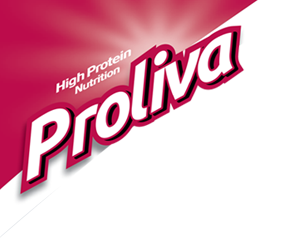-
Protein Debate: Which Protein is best?
10.05.2017
A protein’s strength or weakness is based on the quality and quantity of its essential amino acid profile for healthful growth effects. For example, Soy protein generates known cardiovascular benefits, while Whey protein reproduces significant muscle growth effects. Protein quality may therefore be judged by its essential amino acid yield per serving. The body cannot make essential amino acids for itself and is therefore dependent upon dietary sources.
ESSENTIAL AMINO ACIDS MILLIGRAMS PER 26 GRAMS AMINO ACID SOY WHEY LEUCINE 1546 2609 ISOLEUCINE BCAA 921 1333 VALINE BCAA 940 942 METHIONINE 245 443 ARGININE 1428 480 HISTIDINE 489 425 LYSINE 1184 2222 PHENYLALANINE 977 831 TRYPTOPHAN 595 244 TOTALS 9039 10491 Non-essential amino acids are also beneficial for replacing exercise-cannibalized amino acids from muscle mass. Therefore, the amino acid profile for Soy and Whey may also be compared in terms of their non-essential amino acids donor potency:
AMINO ACIDS MILLIGRAMS PER 26 GRAMS AMINO ACID SOY WHEY CYSTEINE 244 869 ASPARTIC ACID 2180 2039 ALANINE 808 230 GLUTAMIC ACID 3589 2683 GLYCINE 789 78 PROLINE 940 179 SERINE 977 180 TYROSINE 714 172 TOTALS 10241 6430 These values represent individual amino acid content in SOY and WHEY. Next, compare Soy and Whey to other protein sources: human milk, eggs, and cow milk, beef:
COMPARISON OF AMINO ACID PROFILES IN COMMON PROTEINS [2] AMINO ACID (mg AA/g protein) Amino Acid Human Milk Cow Milk Egg Beef Soy Whey Histidine 26 27 22 34 19 16 Isoleucine BCAA 46 47 54 48 49 54 Leucine BCAA 93 95 86 83 82 89 Valine BCAA 55 64 66 50 48 82 Lysine 66 78 70 89 64 88 Methionine 42 33 57 40 26 32 Tyrosine 72 102 93 80 92 65 Threonine 4 44 47 46 38 65 Tryptophan 17 14 17 12 14 22 TOTALS 421 504 512 482 432 513 PROTEIN DIGESTIBILITY CORRECTED AMINO ACID SCORE (PDCAAS)Protein growth potency is judged by its weakest essential amino acid. The PDCAAS classifies protein quality for humans based on the amino acid requirements the most demanding age group (2-to-5-years) and is adjusted for digestibility. Only three proteins are considered “Complete” based on their PDCAAS score:
PROTEIN PDCAAS WHEY 1.0 SOY 1.0 EGG 1.0 Grains & Legumes 1.0 Grains & Vegetables 1.0 Grains, Nuts, & Seeds 1.0 Rice & Peas 1.0 Legumes, Nuts, & Seeds 1.0 Beef 0.92 Rice + Milk 0.92 Peas 0.73 Oats 0.57 Peanuts 0.52 Rice 0.47 Corn 0.42 Wheat Gluten 0.25 AMINO ACIDS ACCESS THE BRAIN, ENERGY LEVELS, MOOD, EMOTION, APPETITE, AND MUSCLE GROWTH HORMONE RELEASE There are 4 main classes of amino acids. When amino acids from the same class are present simultaneously with others, they compete for entry through the blood-brain barrier. A single free-form amino acid will cross blood-brain barrier with greater potency effect. When, for example, Glutamine, Arginine, Tryptophan, Glycine, and the BCAA’s (Leucine, Valine, and Isoleucine) are taken as free form amino acids without having to compete against other amino acids in their class have been reported to stimulate maximal hGH release with muscle growth rate increased effects.
The protein food’s amino acid profile affects its biological value. Protein food sources can be consumed together regenerating a complete protein rating PDCAAS 1.0-score. One protein may have a better effect if it is mixed with another based on the strength and weaknesses of its amino acid profile. Only 3 protein amino acid profiles have been rated as “Complete” or with a perfect PDCAAS score of 1.0. “Complete Proteins” are SOY, WHEY, & EGG WHITES. PDCAAS means “Protein Digestibility Corrected Amino Acid Score.” An argument can be made for consuming whey protein during strength or speed training cycles, and soy during endurance cardio training cycles keeping the carbohydrates to protein ratio of 3-4 to 1 as total dietary protein of 1.7 grams during speed/strength training but no more than 1.4 grams/kilogram bodyweight during endurance training cycles. Only small portions of protein should be consumed during exercise, which operate to blunt protein deficits created by exercise. During the first 30 minutes after exercise it is important that the athlete consume a large protein meal of 40 grams with 120-160 grams carbohydrates to refill the lean muscle mass stores for recovery and “muscle growth” after exercise. Too much dietary protein above 1.7 grams per kilogram body weight is not necessary, increasing the risk of elevating nitrogen, ammonia, urea, dehydration, and increasing feelings of malaise from nitrogen toxicity impacting stress on the liver and kidneys. More is not always better, but balance is always key.
Following table shows Protein BV and PDCAAS of the foods often found on menus of people wanting to become and stay fit:
Food Protein Biological Value PCDAAS Whey Protein Isolate 159 1.0 Whey Protein Concentrate 104 1.0 Eggs 100 1.0 Milk 91 1.0 Egg whites 88 1.0 Fish 83 – Beef 80 0.92 Chicken 79 – Casein 77 1.0 Soy Protein 74 0.91 Pea Protein 65 0.69 Rice 59 – Oats 58 0.57 Wheat 54 0.42 Beans 49 – Protein Biological Value and PDCAAS are just showing us that for healthy nutrition, one needs to eat varied foods – there are no the best protein source, no the best vegetable, fruit etc …
One another way of testing food as protein source is verifying if the food is source of complete protein – if the food contains essential amino acids in right amounts and ratios.
Latest Blog Post
- Sugary Drinks Linked to a Higher Cancer Risk
- The Latest Research on Protein and Muscle-Building
- 27 Health and Nutrition Tips That Are Actually Evidence-Based
- Tall order: More to good growth in toddlers than just measurements
- Millions of cardiovascular deaths attributed to not eating enough fruits and vegetables

